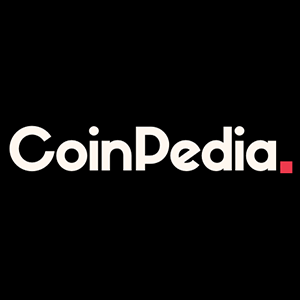Summary Bitcoin's price is closely tied to global fiat liquidity, particularly M2 growth, which is set to surge with upcoming rate cuts. Central banks create base money, which is multiplied through fractional reserve banking, increasing broad money (M2), driving BTC prices higher. The US debt situation will likely lead to more base money creation, boosting M2 and BTC prices, potentially reaching $120,000 by February. Risks include insufficient lending stimulation from rate cuts and significant sell-walls at key price points like $100,000, impacting BTC's upward trajectory. Bitcoin (BTC-USD) is a proxy for global fiat liquidity. This is probably the most consistently true thing with regards to its price. One look at the chart below tells you almost everything you need to know about how well this relationship has held up for the last 14 years. Bitcoin and M2, yoy growth (BGeometrics) The chart above uses yoy growth. You can also toggle it to show growth over 7-week periods, which is over 7 times more granular. The relationship between global M2 liquidity and BTC price persists. Bitcoin and M2, 7 weeks growth (BGeometrics) It’s actually startling how well the red areas (negative M2 growth) correspond with mid-cycle drawdowns in BTC. The thesis here is quite simple: the most important factor for the growth of BTC is the increase in fiat liquidity. Global M2 means all the fiat currencies that have been multiplied, via fractional reserve banking, from a supply of base money. Here’s a quick overview of how it works. Fiat Overview The central bank — this can be the Fed (US dollar), ECB (euro), BoJ (yen), BoE (British pound), or the PBoC (Chinese yuan or renminbi) — issues base money in the form of banknotes and bank reserves. This is also called M0. Base money dollars are banknotes and bank reserves at the Fed, just as base money yen are banknotes and bank reserves at the BoJ. M0 is multiplied via fractional reserve banking. As consumers deposit base money (such as cash) in a bank, the bank can lend this out and create more money out of the base money. The created money is deposited in other bank accounts and then loaned out again to create even more money. The net aggregate of money creation from a set of base money is collectively called broad money. Though M2 isn’t strictly broad money, the two concepts are monotonically correlated. Note that technically two avenues of money creation exist here. The first is that the central bank can create base money out of nothing. This is as simple as entering a new entry for bank reserves (which is base money) for a particular bank (this is what happens when a bank is getting bailed out) or the US Treasury’s account (this is what happens when the Fed is the only buyer of US debt). The second avenue of money creation is the aforementioned fractional reserve banking which creates broad money or M2. M2 is what most people are dealing with on a day-to-day basis. Unless you get paid in physical cash, you are receiving broad money. When you buy a house or car with an asset backed loan, you are doing it with broad money because the bank is lending broad money into existence from a pile of base money that it holds (its bank reserves at the Fed). This mechanism is true all over the world with all major fiat currencies. So now we just have to look for whether global M2 is set to go through dramatic increases soon. In general, M2 increases can occur when more base money is created and the money multiplier of fractional reserve banking persists. Think of this as creating more M2 because more base money now exists to be multiplied. Now, M2 can also increase without base money increasing at all if there is more lending going on. What causes more lending? Lower interest rates! What is the Fed about to do? Lower the Fed Funds Rate! Both the BoE and ECB have already cut rates. While the BoJ is raising rates, this is largely to fight off the inflation that has been raging in Japan, which came as a consequence of excessive money creation from doing negative rates and yield curve controls. This Is Great For Bitcoin If the relationship between fiat liquidity and the price of BTC persists, then BTC has some incredibly strong tailwinds as we head into the first US rate cut in a few years. Fiat liquidity is about to surge to all-time highs, and the yoy M2 growth is headed for a much higher spike. This has always been accompanied with the BTC surging to new highs. Therefore, I do expect BTC to break through its ATH of around $73,000 and touch $120,000 by February. This would mean a 2x from today’s price. Previous surges in M2 growth rates have led to BTC increasing by a factor far larger than 2x. What is probably even better than rate cuts is the burgeoning US debt. At this rate, $1 trillion is added to the debt every 100 days . Unless something drastically changes, 100 days is going to eventually turn into 50 and then 30 days. This is just the nature of compound interest. The tax revenue for the US Federal Government was less than $4.5 trillion for fiscal year 2023. When 100 days adds $1 trillion, the US is very close to the point where a whole year’s tax revenue will not be enough for a whole year’s increase in the debt. The only way to make up the difference is to literally make the base money by creating bank reserves for the US Treasury account so that the Federal government can pay the interest on the debt. This obviously triggers the first way more M2 is created: when more M0 is created and then multiplied by the banking sector. After all, the interest payments go out into the real economy, into the hands of people who hold US government debt securities. All of this extra USD M2 of course increases global M2, which has, traditionally, flowed into BTC. With the debt situation reaching a point of exponential compounding, I think it is only a matter of time before BTC reaches the price targets I am putting out. Risks One important risk I could see playing out is that the rate cuts aren’t actually that stimulating in terms of lending activity. Many people have mortgages locked in between 3-4% from 2020 to 2021. These people will need rates to come all the way down before they will have any need to refinance at lower rates. This would mean less M2 growth, which undermines the thesis. Another risk is what can probably best be described as “sell walls.” A lot of people are wondering why the Halving-induced supply shock has yet to materialize. The only absolutely correct answer for this is the supply and demand dynamic. There are simply more sellers than buyers, and this is pushing the price down. The best representation of this would be whales selling into rallies. Even with corporations buying BTC as a treasury reserve asset and even with the buying pressure from the spot ETFs , there are still wallets with tremendous amounts of BTC that are able to keep the price lower because they are looking to exit their positions. Thus, many points along the path to $100,000 will likely be met with selling. I expect $100,000 to be a gigantic sell-wall because of the psychological significance of this number. Likewise, the previous ATH before $73,000 and the current ATH are all possible sell-walls. These things must be considered if you are trading BTC. Conclusion I think BTC remains one of the most compelling opportunities today, with very high upside over the next few months. It is not a flight to safety . It has flunked that test, at least in the near term. However, it is a supercharged proxy for M2 liquidity, and M2 liquidity is about to explode higher. BTC is a Buy.













